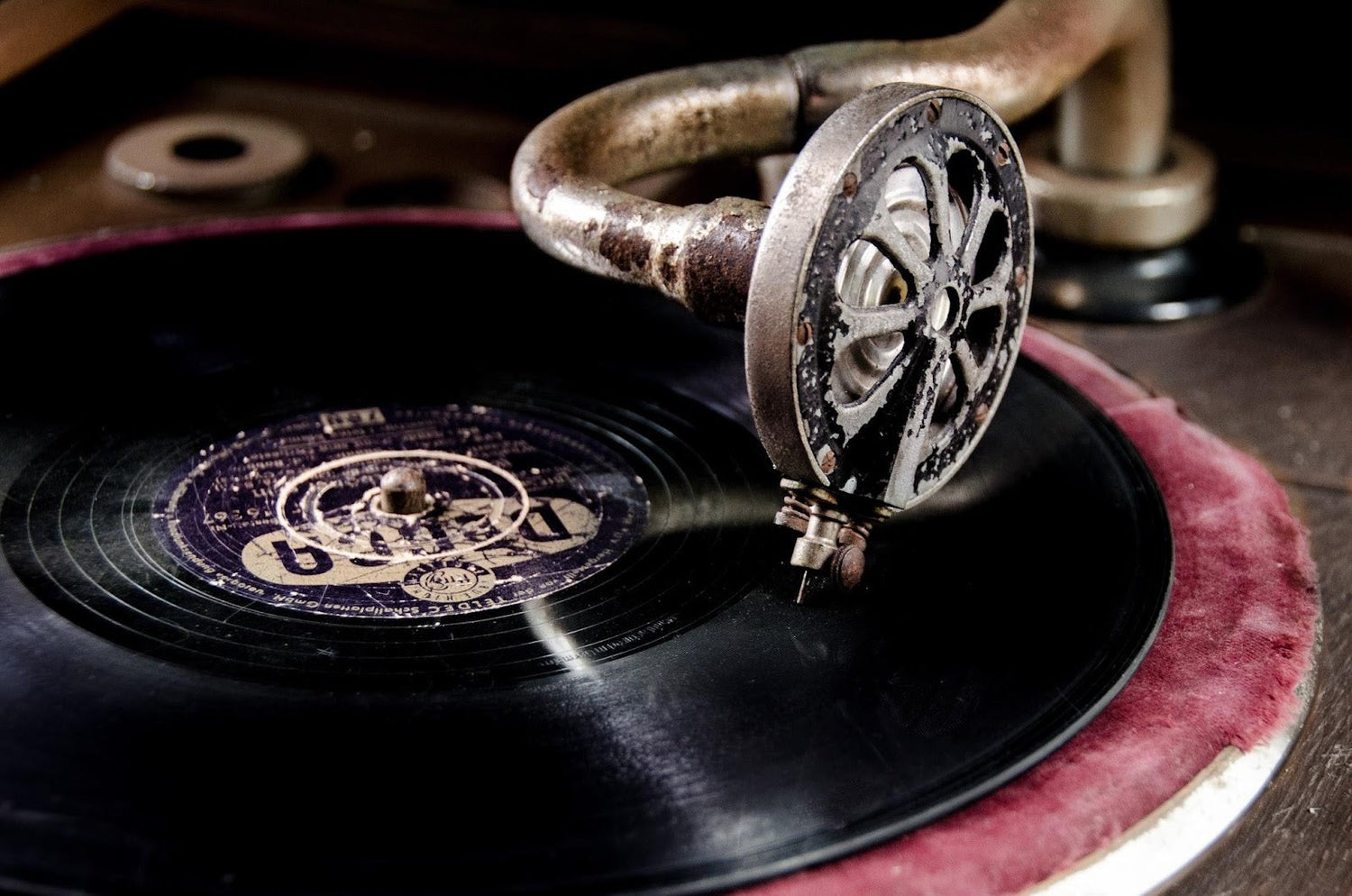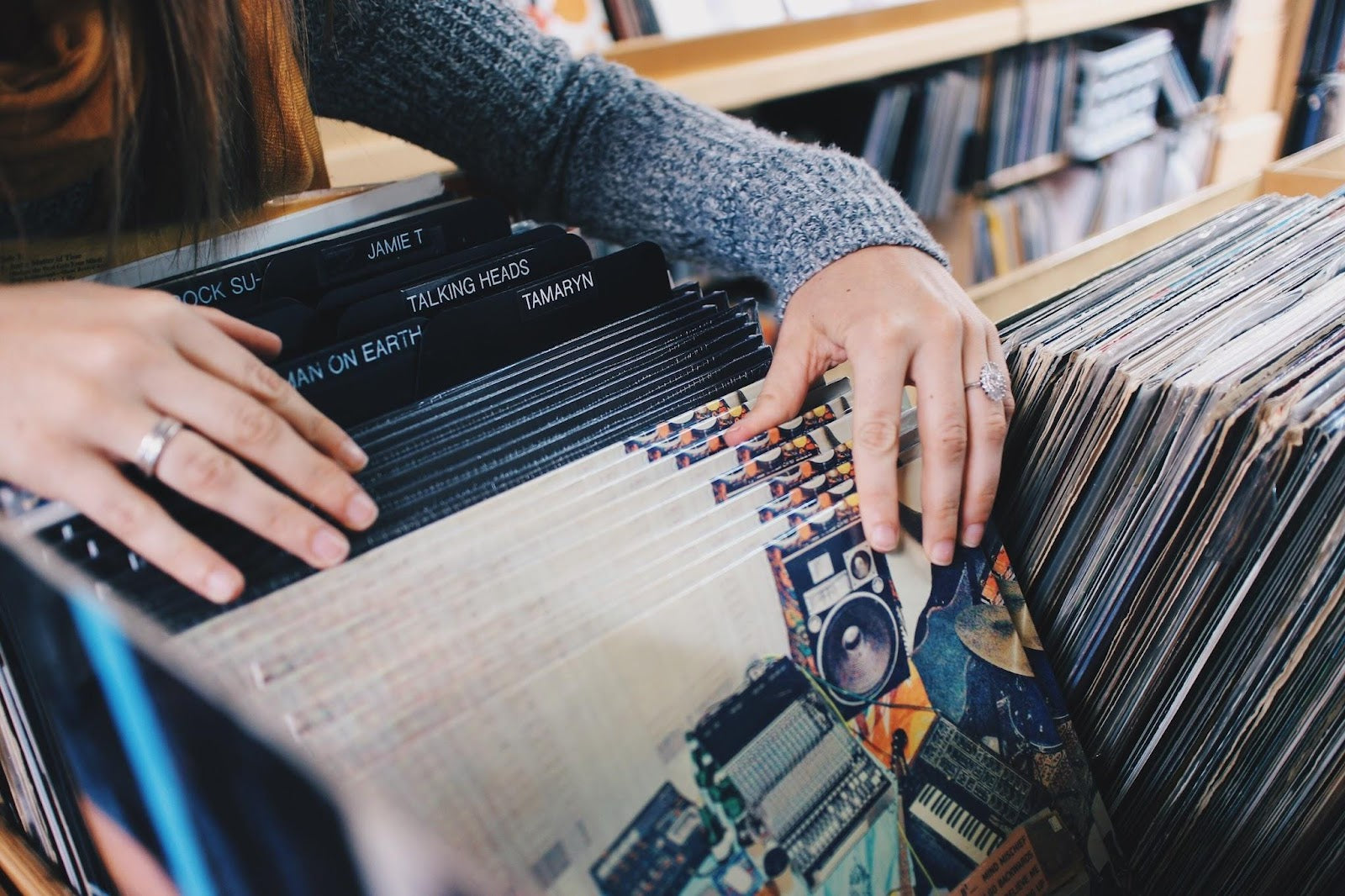Imagine the music listening experience before the mid-1940s: every three to five minutes, you had to get up to change or flip over a heavy, fragile 78 rpm shellac record. Enjoying a symphony or an opera meant handling a thick stack of discs, the music chopped into brief segments. This experience was completely overturned in 1948.
The LP (Long Playing record) introduced by Columbia Records wasn't just a technical improvement; it was a true revolutionary catalyst that profoundly reshaped the boundaries of music creation, listener consumption habits, and the entire economic structure of the music industry, ultimately propelling vinyl to its undisputed commercial and cultural peak in the mid-20th century. This transformation was the inevitable result of a complex interplay between technological innovation, commercial ambition, and evolving listener demands.
1948: The Birth of the Long Playing Record (LP) and its Watershed Significance
The limitations of the 78 rpm record were obvious. Its short playing time not only restricted the length of individual songs but also fragmented longer works (especially classical music), severely impacting the work's integrity and listening continuity. This technological bottleneck reflected a music consumption model primarily centered around the single song.
The change occurred in the laboratories of Columbia Records, where a team led by Peter Goldmark achieved a breakthrough. They didn't rely on a single innovation but rather integrated several key technologies:
- Microgroove: Significantly reducing the width of the record groove made it possible to fit much longer recordings onto the same surface area.
- 33⅓ RPM Speed: Lowering the rotational speed (from 78 RPM down to 33⅓ RPM) further extended the playing time.
- Vinylite Material: Using lighter, more durable, and lower-noise vinyl plastic replaced the fragile and surface-noise-prone shellac.
The combination of these three technologies allowed a single side of a 12-inch LP record to play for about 22 minutes, achieving an exponential increase in Information Density compared to 78s (First Principle: Efficiency and Information Storage). This meant that an entire symphonic movement, a collection of multiple pop songs, or even a Broadway musical cast recording could be contained on one or just a few LPs. The concept of the "Album"—a term originally referring to the book-like binders holding multiple 78s—gained a new physical medium and artistic potential applicable to popular music.
However, the LP's launch was not smooth sailing; it immediately ignited a fierce "Format War." Competitor RCA quickly introduced its own solution: the 7-inch, 45 rpm single. This small, inexpensive disc was ideal for hit singles and rapidly captured the jukebox market. This commercially driven competition (Real-world Mechanics: Market Competition and Standardization Battles) caused initial market confusion (consumers needed players compatible with different speeds), but eventually led to a market structure where the LP dominated the album market and the 45 dominated the singles market, together shaping the music industry landscape for decades to come.
Reshaping Rhythms: How LPs Altered Listening Habits
The LP brought more than just extended playing time; it fundamentally changed the way people interacted with music:
- Shift from Singles to Album Experience: The most direct impact was a shift in listener focus from isolated singles to a coherent whole. The LP's capacity encouraged artists to organize multiple songs into a collection with a unified theme, mood, or narrative arc. This gave birth to and popularized the "Concept Album" format, from Frank Sinatra's thematic LPs to later grand narrative works in rock music (like The Beatles' Sgt. Pepper's Lonely Hearts Club Band).
- Cultivating Deep Listening and Immersion: Compared to the quick consumption of singles, listening to an LP often required a longer, uninterrupted time commitment. This fostered a more ritualistic listening habit. Listeners might sit down, carefully study the Album Art and Liner Notes, and immerse themselves in the complete musical world created by the artist. This experiential shift fulfilled human needs for narrative integrity and deep engagement (First Principle: Cognitive Needs and Attention Patterns).
- Reshaping the Creative "Canvas": For artists, the LP provided a much broader "canvas" than the single. No longer constrained by a roughly 3-minute limit, they could create longer, more structurally complex pieces, undertake bolder musical experiments, and explore more subtle emotional shifts. This significantly liberated artistic expression, especially in genres like jazz, progressive rock, and classical music.
Of course, there are overlooked blind spots here: not all LPs were used for deep listening; they also served as background music. Simultaneously, the 45 rpm single remained vitally important for pop music dissemination, radio play, and youth culture; the rise of the LP did not completely supplant the single. The romanticized narrative of the "album experience" needs to be viewed realistically. But undeniably, LP technology actively restructured the temporal dimension of music consumption, profoundly influencing both creative paradigms and audience engagement.
The Reign of Vinyl: Commercial and Cultural Peak (1950s - 1970s)
Starting in the 1950s, and especially during the rise of rock and roll in the 60s and 70s, the LP became the undisputed king, propelling vinyl records to their commercial and cultural "Golden Age":
- The Economic Engine of the Industry: The LP became the record industry's primary source of profit. Its higher price point (compared to singles) and the model of bundling hit songs with lesser-known tracks generated substantial returns for record companies. Major Labels built vast commercial empires around LP production, distribution, and marketing, further consolidating their market dominance (Real-world Mechanics: Business Models and Economies of Scale).
- Establishment of the "Album Era": In many key genres, particularly rock, the "album" replaced the single as the primary measure of an artist's artistic achievement and commercial value. "Album-Oriented Rock" (AOR) became a significant radio format. Releasing a successful LP was a major milestone in an artist's career.
- The Cultural Explosion of Album Art: The 12x12 inch LP sleeve provided an unprecedented visual platform. Cover design evolved into a significant art form and cultural symbol in its own right. From Andy Warhol's banana cover for The Velvet Underground to iconic covers for The Beatles, Pink Floyd, and countless others, these were not just packaging but visual statements, brand identities, and cultural commentary. This greatly enhanced the LP's value as a cultural collectible.
- Vehicle for Identity Formation and Community Building: Especially from the 1960s onwards, owning and displaying specific LPs became a powerful way to express personal taste, cultural affiliation, and social attitudes. Among youth and counter-culture groups, record collecting was a key practice in constructing identity and fostering community bonds (First Principle: Social Signaling and Tribal Affiliation). Your record collection, in a way, defined "who you were."
- Commodification and Dissemination of Culture: The LP efficiently packaged and sold not just music but also associated lifestyles, attitudes, and even ideologies. Rock and roll, the folk revival, psychedelic culture – all were widely disseminated via the LP medium, which also accelerated the process by which these subcultures were absorbed and commodified by the mainstream commercial system (Objective Reality: Commercial Co-option of Counter-culture).
However, this Golden Age also had its shadows or blind spots: The "Gatekeeper" role of major record labels meant they held immense power to decide which artists and music received recording and promotional opportunities. This could limit musical diversity, making it difficult for artists outside the mainstream or those not fitting the commercial album model to gain traction.

Conclusion
The birth of the LP record in 1948 was not an isolated technical event; it was the starting point of a chain reaction. By dramatically extending playing time, the LP changed not only how people listened to music but also how music was created, packaged, sold, and culturally valued. It gave rise to the core concept of the "album," around which a massive industry and rich cultural practices were built, propelling vinyl records through a nearly three-decade Golden Age.
This era demonstrates the powerful feedback loop between technology, artistic expression, consumer behavior, and commercial strategy. The LP's success was not preordained but emerged from its precise fulfillment (and further shaping) of evolving artistic and cultural needs, coupled with effective (though competitive) commercial positioning and its deep integration into the socio-cultural fabric of the mid-20th century. Its legacy—concerning the allure of long-form narratives, the value of physical media, the symbiosis and tension between art and commerce—continues to resonate even in the digital age.





Leave a comment
All comments are moderated before being published.
This site is protected by hCaptcha and the hCaptcha Privacy Policy and Terms of Service apply.